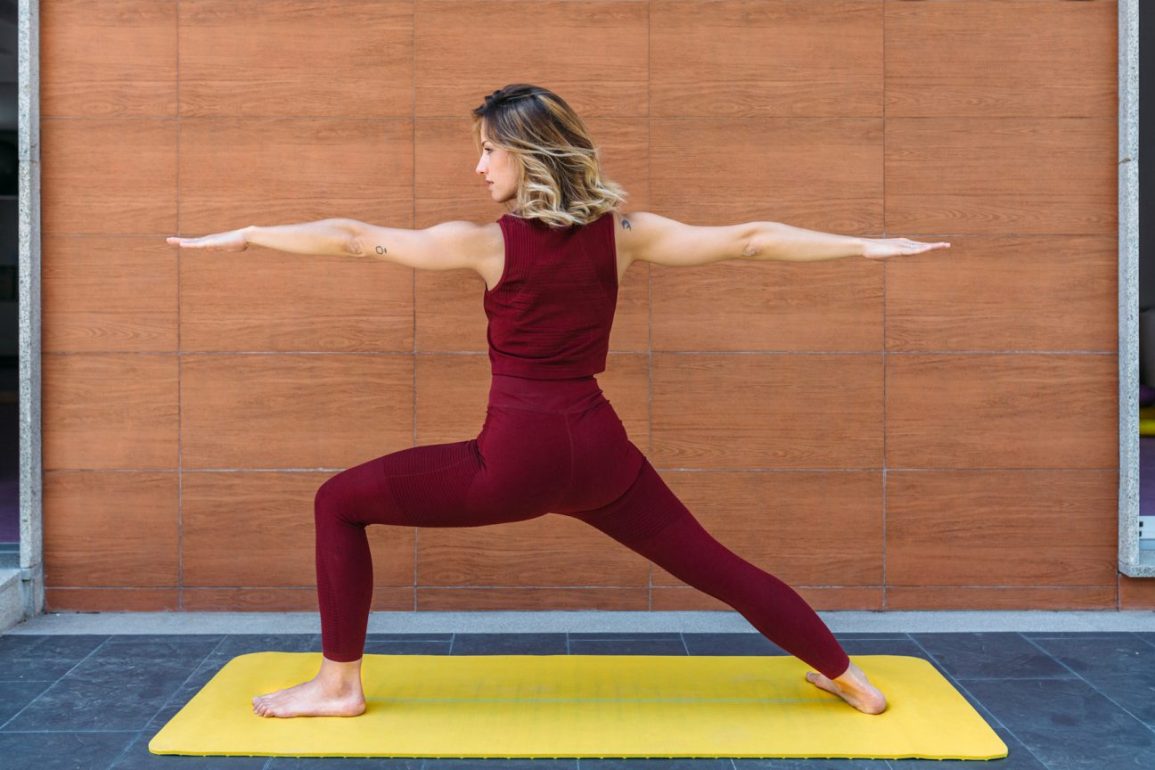
Constipation yoga can provide many benefits. Constipation yoga has many benefits. It helps to control the body's release of compounds. The majority of serotonin can be found in the gut. Yoga can balance serotonin production by strengthening the parasympathetic nervous systems. This can reduce constipation symptoms. You can get relief from constipation by a variety of methods.
The cat-cow asana is the first pose that can be used to relieve constipation. This pose is very relaxing. It also stimulates blood flow and digestive system. You will need to lay on your stomach with your legs extended. The second step is to extend your right leg outward. Next, you will need to wrap your right leg inwardly while keeping your chin up against the ceiling. Repeat the same process for the other side.

Cobra Pose is third yoga pose to help constipation. Start by lying flat on one side with your feet pointed out. Your palms should be positioned on the floor in line with your shoulders. Next, engage your abdominal muscles and legs. Then lift your head upwards and let the twisting motion massage your intestines. This pose can help you pass gas and get a better night's sleep.
Another yoga pose to treat constipation is the downward-facing dog. This pose involves twisting your torso. Crescent Lunge Twist requires that you hold a position in which to twist your torso. The Cobra Pose allows for a simpler version that doesn't require any twisting. However, the Wind-Relieving Pose can be helpful as well. This requires that you press your hands into the chest and stretch your legs. However, it can relieve gas.
Pawanmuktasana can also be used to relieve constipation. This is also known as the Wind Relieving Pose. This pose is great for relaxing and soothing your intestines. This yoga pose can improve your posture and abdominal flexibility. This yoga pose can also improve blood circulation. This will prevent constipation pain and discomfort. You'll also feel more flexible when you practice this pose.

Another effective yoga position for constipation is the Yogi Squat. The same principles as the Squatty Potty are used here, but this pose is better at relieving constipation. This pose is great for increasing your water intake. It's also good for digestion. A yoga practice that includes lots of water will make you feel happier and help you move more easily. Healthy lifestyles will reduce the need for medication for constipation.
Another effective yoga pose to treat constipation, the Corpse Poses, is another. This upright pose stretches the hamstrings, abdominal organs, and strengthens the core. It opens your chest and oxygenates your whole body. It is very helpful for people with indigestion. Universal spinal twist is the best posture for constipation. This pose can also be helpful in managing stress. This yoga asana will help you if you suffer with chronic constipation.
FAQ
Which dietary supplement can help you lose weight?
Losing weight requires both diet and exercise. Some people find that supplements can help them along the journey.
Research suggests that omega-3 fats may aid in weight loss. Omega-3s, essential fats, are critical for brain function and cell membrane health. They are found in fish like salmon, tuna, shrimp and cod liver oil.
Other research suggests that green tea might be beneficial for weight loss. Green tea contains catechins. These antioxidants may be able to increase metabolic rate and encourage weightloss.
Cardio Exercise: Good or Bad for Your Health?
Cardiovascular exercise can have many benefits. It increases blood circulation, strengthens the heart muscle, boosts stamina, aids in weight loss, and gives you more energy.
Cardiovascular exercise includes running, biking, hiking, swimming, tennis, basketball, soccer, volleyball, football, etc.
Cardio exercises should not be done at high intensity. Doing this could lead to injury.
Cardiovascular exercise should be done only if you feel well.
Never push yourself past your limits. This could lead to injury.
When you engage in cardiovascular exercise, it is best to warm up first. Start slowly increasing your intensity.
Always listen to your body. If you feel pain, stop doing cardio exercise immediately.
It is also recommended to take some time off after a cardiovascular exercise. This gives your muscles the chance to heal.
Cardiovascular exercise is an important part of losing weight.
It is the best way for you to lose calories and decrease belly fat.
Is it true that kidney stones can be caused by overeating protein?
Protein is essential for healthy bones and tissue. Too much protein can cause calcium to be excreted through the urine. This can lead kidney stones.
It is important to remember that not all people get kidney stones from eating more than 2g protein per kilogram (2.2lbs) of body weight. You don't have to eat a lot of protein to get kidney stones.
Your sodium intake can prevent kidney stone formation. Sodium regulates the body's water balance. High levels of sodium are linked to a greater risk of developing renal stones.
You can also reduce your intake of proteins if you develop kidney stones. Protein provides about half of the daily caloric needs for most adults. A reduction in protein intake will likely result in weight loss.
If you do decide to eat more protein, don't go overboard. Try to eat less than 20% protein in total calories.
Do I need to exercise every day?
No! Do at least 30 minutes of moderate intensity physical activity five days a week. It means you need to exercise hard enough or walk fast enough that you are slightly out-of- breath.
Is it possible to go to the gym every day of the week?
You can go to your gym seven days a semaine, but not simultaneously. You need to find a time that you are able to do this without feeling exhausted or drained.
This will keep you motivated and provide energy for other activities.
You also need to ensure that you eat well enough during these times. This will make it so you don't feel tired or sluggish while going to the gym.
And lastly, you need to ensure that there isn't anything else competing for your time. For example, if you have children, you may want to avoid exercising on school nights as they will distract you from your workout.
Statistics
- An estimated calorie range for moderately active adult males falls between 2,200 to 2,800 calories per day, depending on age. (eatright.org)
- Are You One of the 20% of Guys (mh.co.za)
- 10 pounds in a month is likely during a lean bulking phase, especially for beginners. (muscleandstrength.com)
- According to the American Heart Association, blood pressure should be checked at least once every two years, beginning at age 20. (my.clevelandclinic.org)
- The PRS enabled risk stratification for overall prostate cancer and lethal disease with a four-fold difference between men in the highest and lowest quartiles (HR, 4.32; 95% confidence interval [CI], 3.16-5.89). (pubmed.ncbi.nlm.nih.gov)
External Links
How To
How can a man lose weight in just 30 days.
It is best to break down difficult goals in small, manageable steps.
It is important to work towards your goal every day. This could be as simple as doing 10 pushups and running for 3km.
This will ensure that you see positive results if you practice it consistently over time.
You must be consistent. You have to keep at it until you succeed!
What is the difference between Aerobic Fitness and Anaerobic Fitness?
Anaerobic fitness means that our bodies can perform intense physical work with no oxygen. Anaerobic pathways are used when there is intense exercise to provide sufficient energy. Anaerobic pathways are glycolysis, creatinephosphate and the phosphagen.
Aerobic fitness, however, refers to the continuous practice of low-intensity aerobic exercise. When performing aerobic exercises oxygen is used to fuel the cells. In other words, aerobic pathways provide more energy than anaerobic.
To run a marathon you need to first increase your aerobic capacity. If you are only focusing on increasing your anaerobic capabilities, you won't finish the race.
Aerobic fitness is also known as cardiovascular fitness. The most common methods of determining cardiovascular fitness are step tests and VO2max testing.
VO2 Max Testing
VO2max is the maximum oxygen (O2) that your body can use while exercising. This test measures the amount of O2 the body can utilize while exercising.
This is the best test to assess cardiovascular fitness. However, the test can only be administered by highly trained professionals and requires expensive equipment.
Step Tests
Step tests are a simple but effective way to measure cardiovascular fitness. These are based on your weight and age, they require you to run or walk on a track.
These tests are simple to perform, cost-effective, and easily accessible from almost any location. You can, for example, walk for 2 minutes on a treadmill, then rest for 1 min, then repeat the process for 20 minutes. Then, stop. You should maintain a constant heart rate throughout the session.
This method is known by the "Bruce Protocol". Bruce, a runner, developed this protocol after realizing that his heart rate did not rise when he ran longer distances.